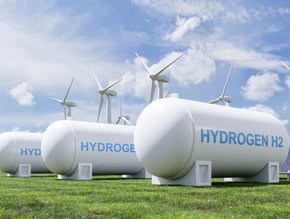PG&E’s Electricity 100% Greenhouse Gas-Free, Utility Says

One of the US’ largest utilities, PG&E is delivering electricity to its customers that is completely free of greenhouse gas emissions.
Its greenhouse gas-free delivery included 53% nuclear, 34% eligible-renewable resources like solar and wind and 13% hydroelectric in 2023. This comes at a time where greenhouse gas emissions reached record levels, instigating the provider to take a major step towards its 2040 net zero energy system target.
Now boasting one of the world’s cleanest electricity portfolios, PG&E continues to ensure its combined natural gas and electric — which serves more than 16 million people in Northern and Central California — is reliable and has environmental sustainability at its core.
Where does PG&E’s greenhouse gas-free power come from?
Here’s a breakdown of where PG&E electricity delivery originates from:
- 34% from specified eligible-renewable resources, including:
- Solar
- Wind
- Hydroelectric generation
- Biopower
- 53% from carbon-free nuclear power generated by Diablo Canyon Power Plant
- 13% from large hydroelectric power.
“We’re all in on creating a clean energy future,” said Patti Poppe, PG&E’s CEO. “Providing retail customers with 100% greenhouse gas-free electricity in 2023 highlights that PG&E’s electric generation portfolio supports achievement of California’s climate goals.”

The state has an ambitious economy-wide carbon neutrality goal which, if reached, will see the entirety of California be carbon neutral by 2045. PG&E is working toward a net zero energy target by 2040, five years ahead of this, and hopes to remove more greenhouse gases than it emits by 2050.
“We’re proud of our clean energy leadership, but we know there is more to do to ensure that clean energy is available at all times of the day and all seasons of the year,” Patti added.
Battery storage indicator of PG&E’s clean progress
“By unleashing the full potential of battery storage to integrate additional greenhouse gas-free sources of electricity, we will continue to reduce emissions across our energy system and make progress toward our goal of net-zero emissions by 2040 at the lowest possible cost,” she continued.
This is in reference to PG&E’s continued investment in battery energy storage systems with the goal to enhance grid reliability, integrate additional renewables into the grid and save its customers both energy and money.
The latest figures show PG&E has brought online more than 2,100MW of new incremental battery storage capacity, with 772MW planned in 2024 and 687.5MW for 2025. In addition to this, the company has more than 3.5GW of total battery energy storage under contract.
This allows renewable resources, which are often generated more at a time when demand is low, to be stored for use at a later time and displaces natural gas-fired resources that would otherwise be dispatched during these peaks.
Solar largest share of PG&E’s renewable energy mix
With 1MW of electricity enough to power 750 homes according to the California Independent System Operator (ISO), PG&E’s extensive renewable portfolio is a testament to the power of this electricity source and the impact it has on its customers and the environment.
The company has more than 260 Renewables Portfolio Standard-eligible power purchase agreements (PPAs) totaling more than 6,000MW, as well as 430MW of eligible-renewable generation. On top of this, it helps its customers obtain their own solar supply, with more than 800,000 customers set up with rooftop solar that is connected to the electric grid.
*******************
Make sure you check out the latest edition of Energy Digital Magazine and also sign up to our global conference series - Sustainability LIVE 2024.
*******************
Energy Digital is a BizClik brand.






